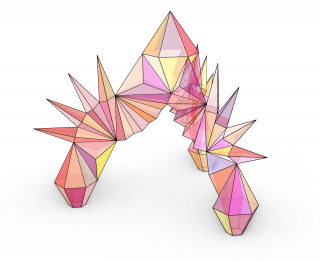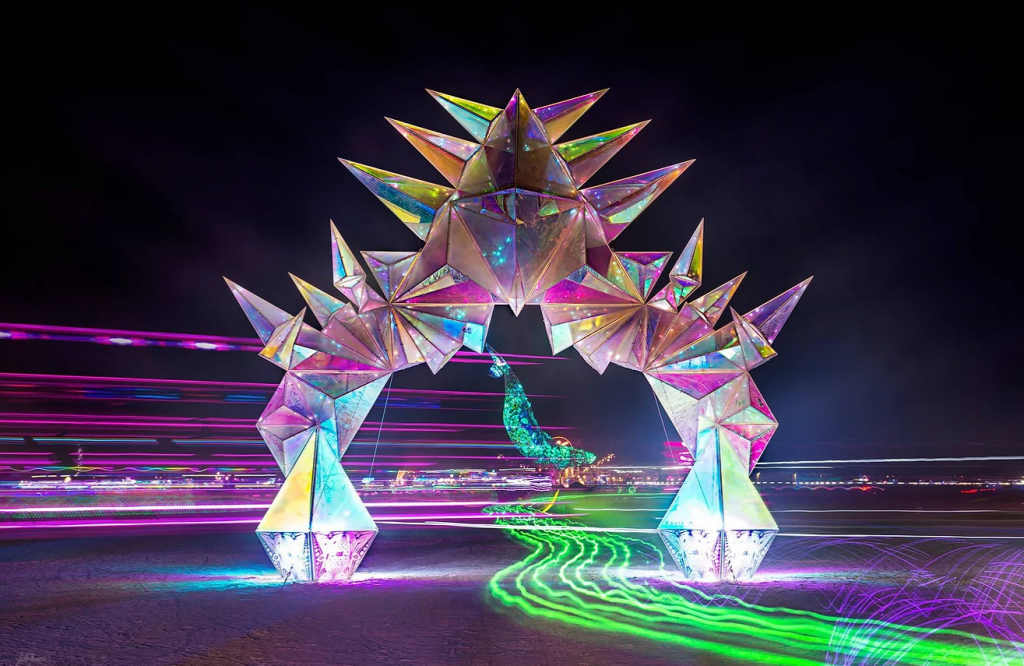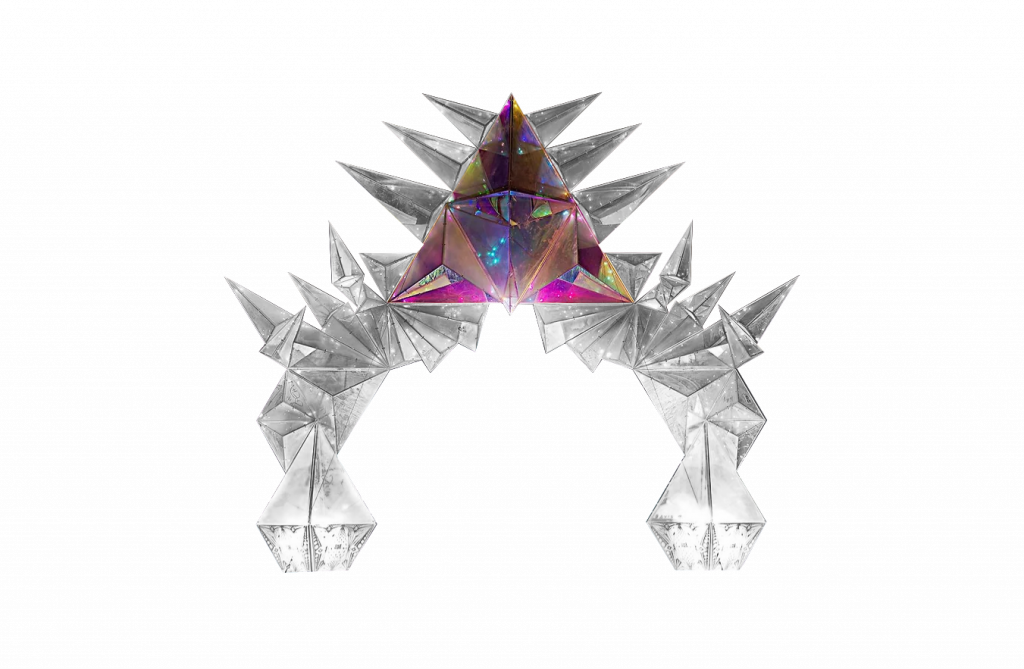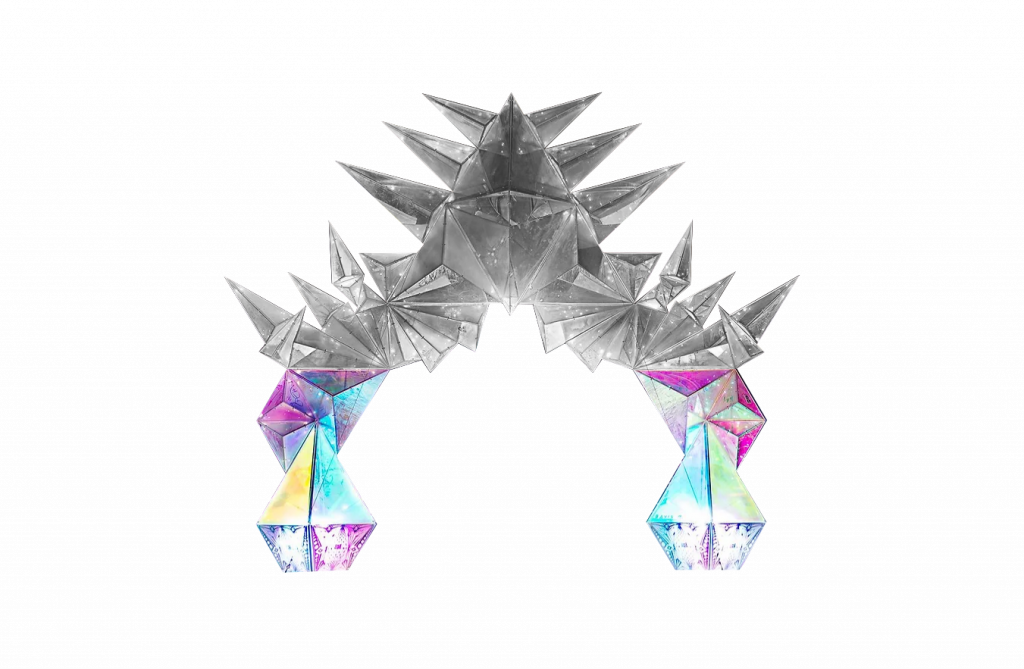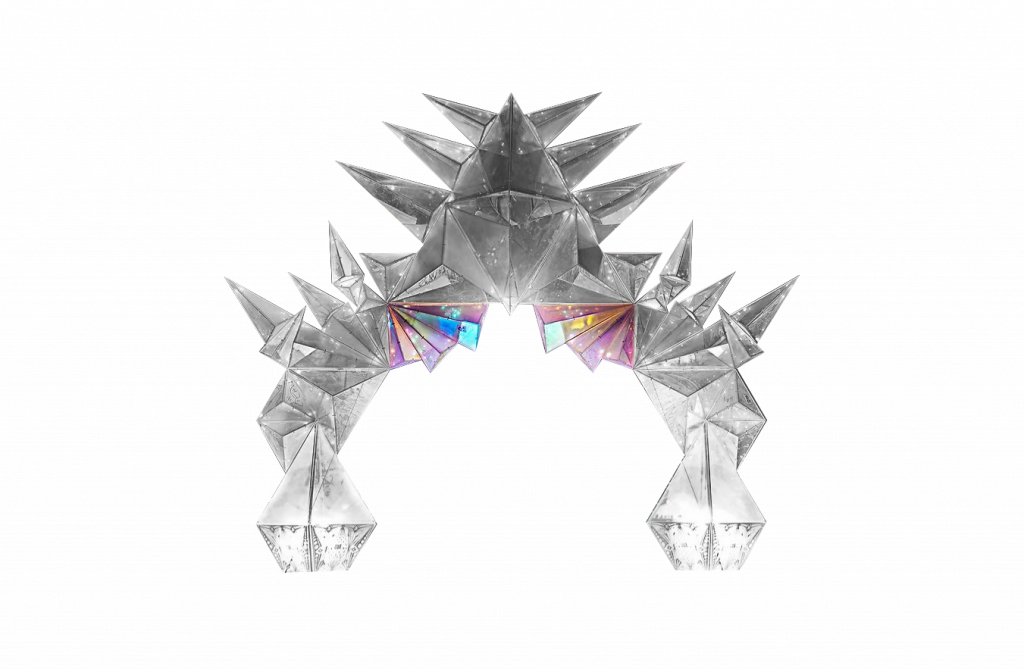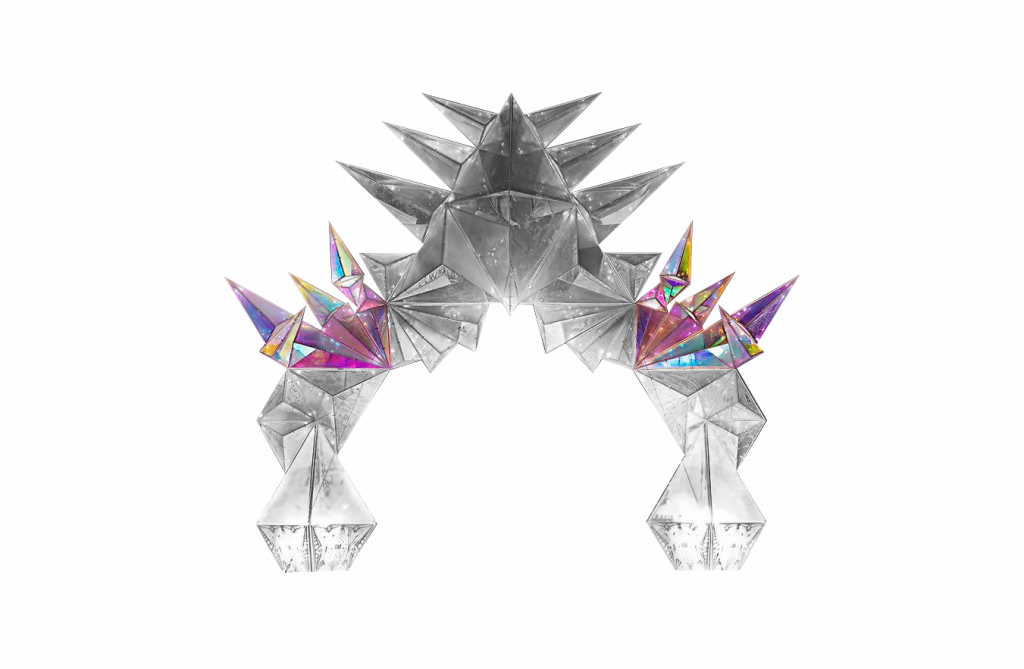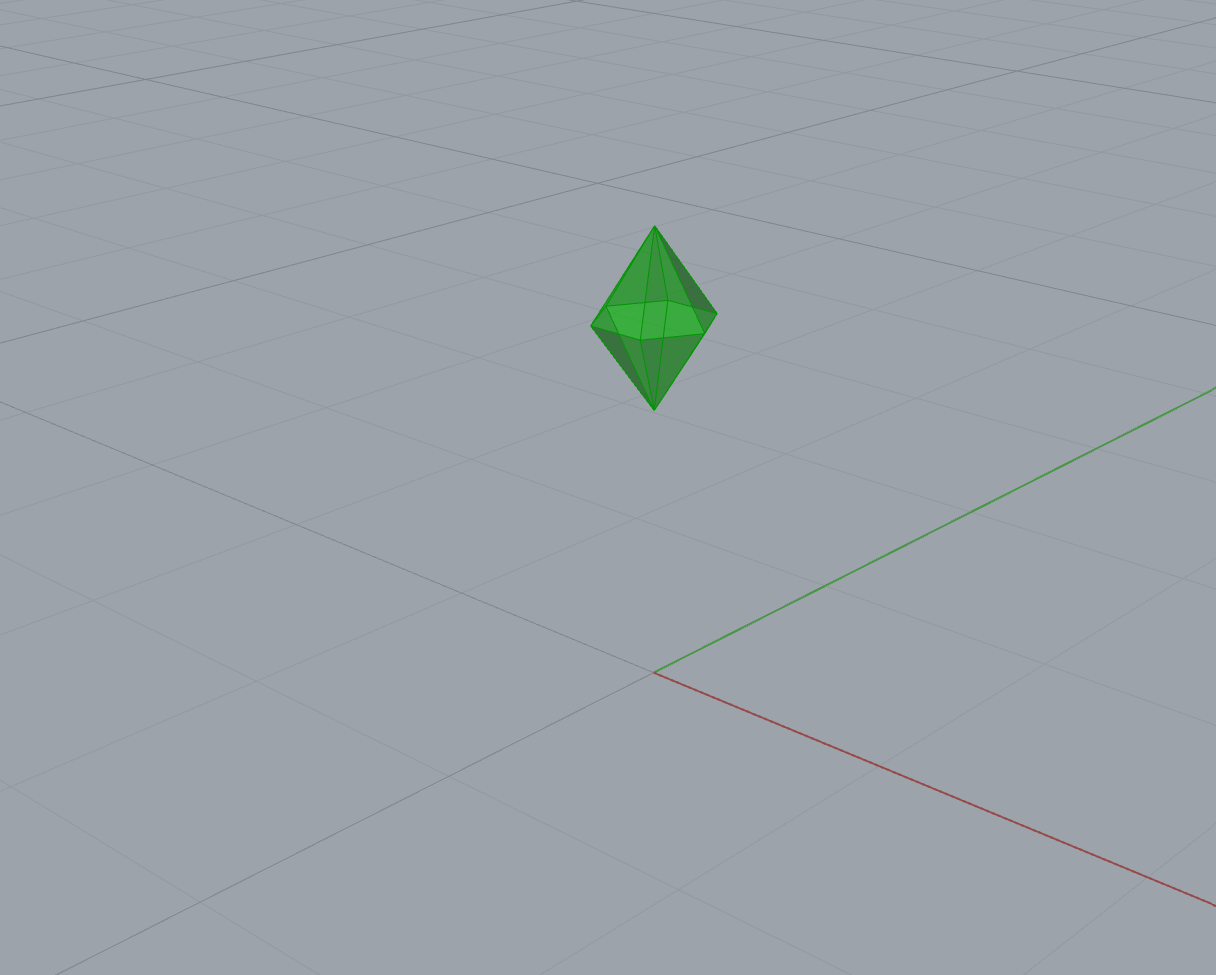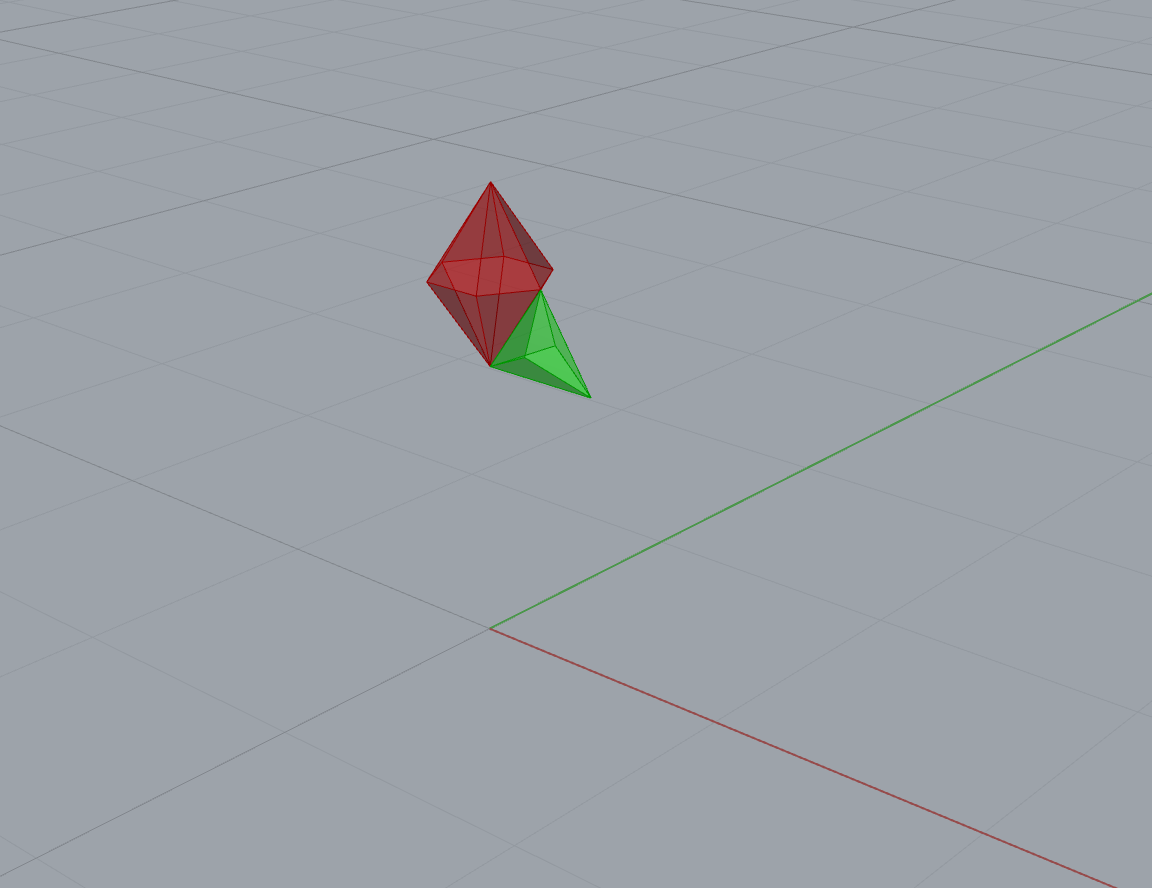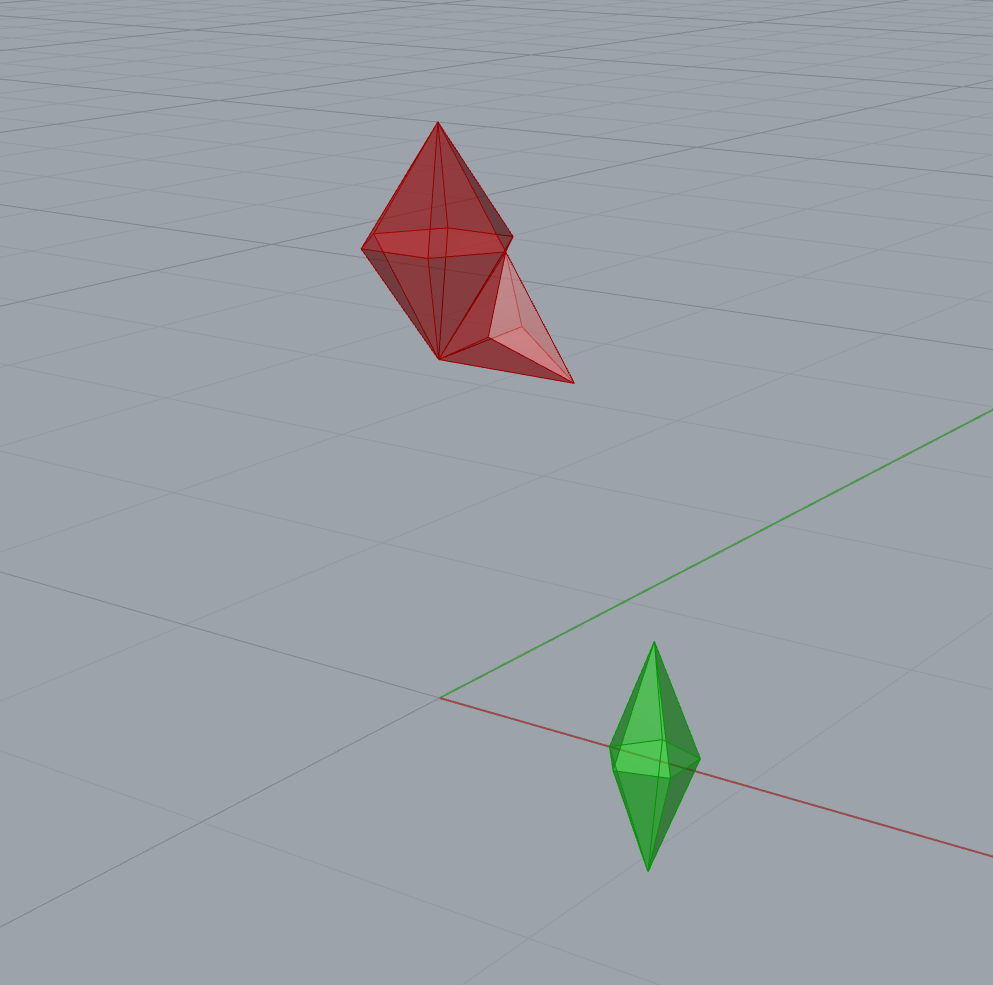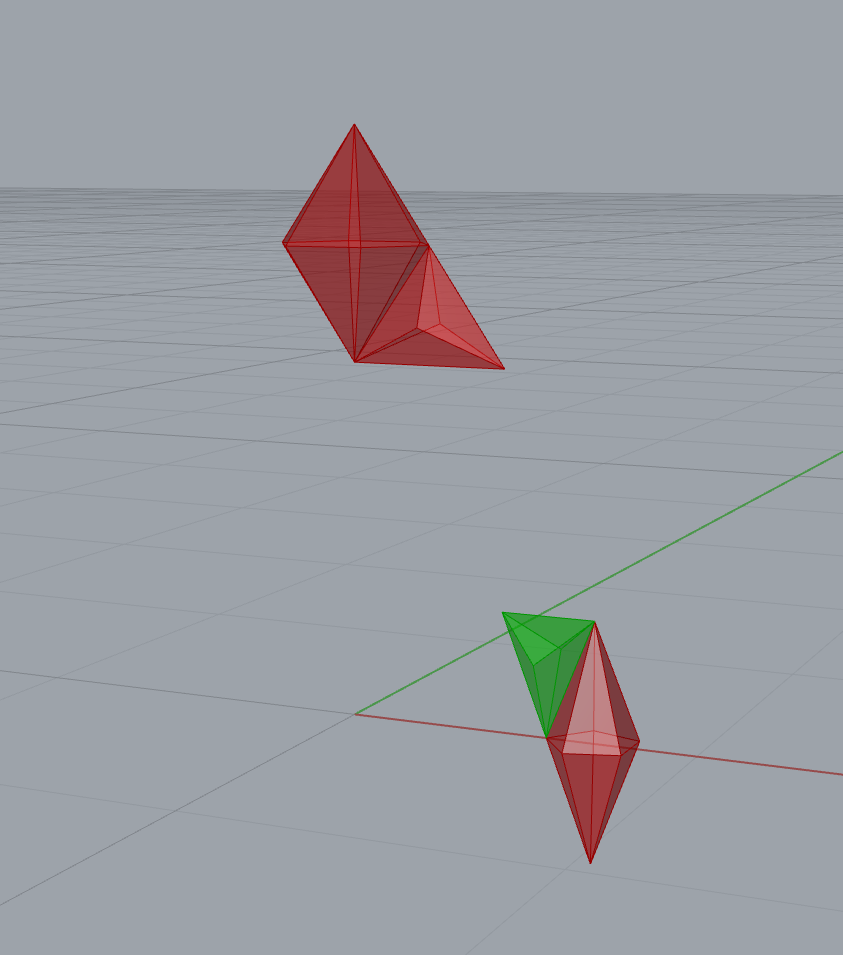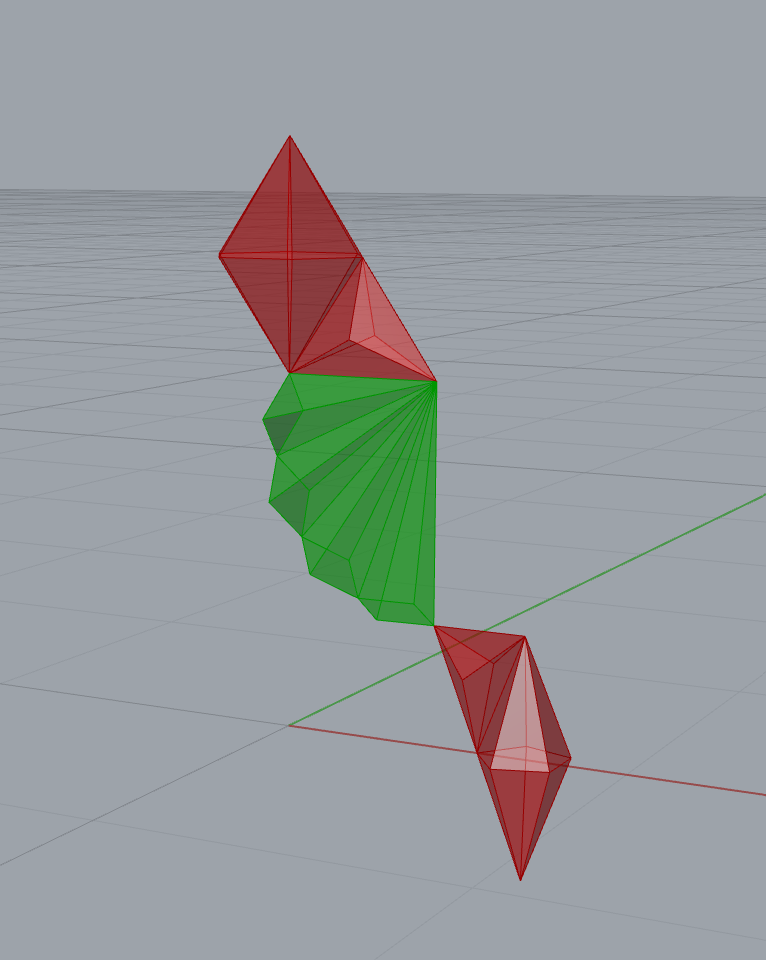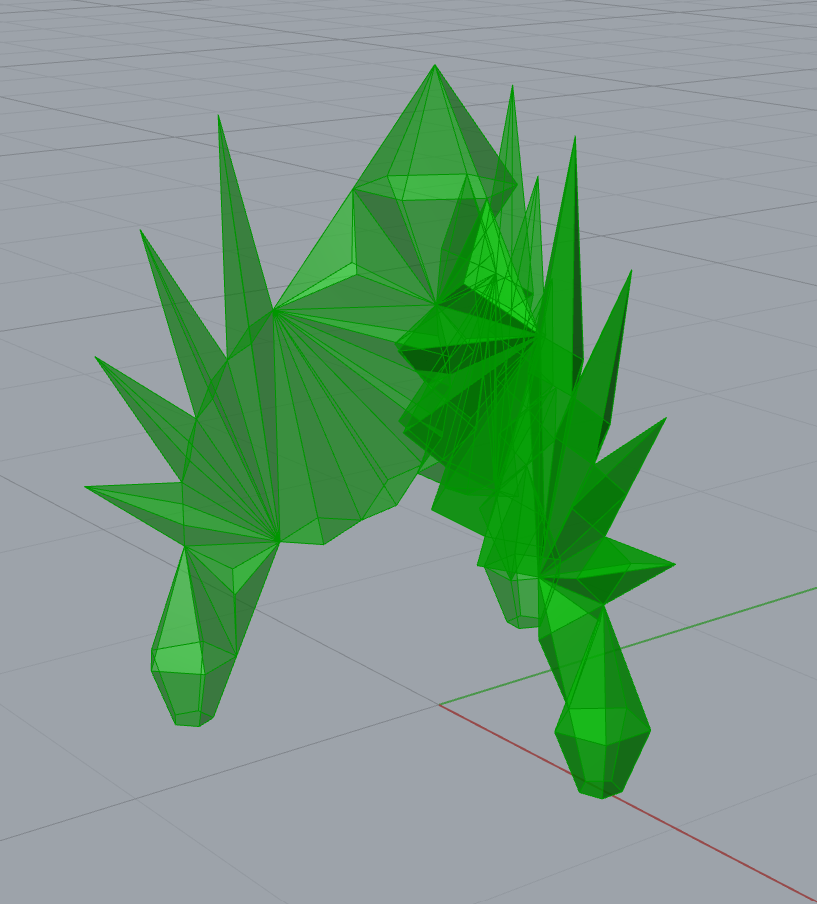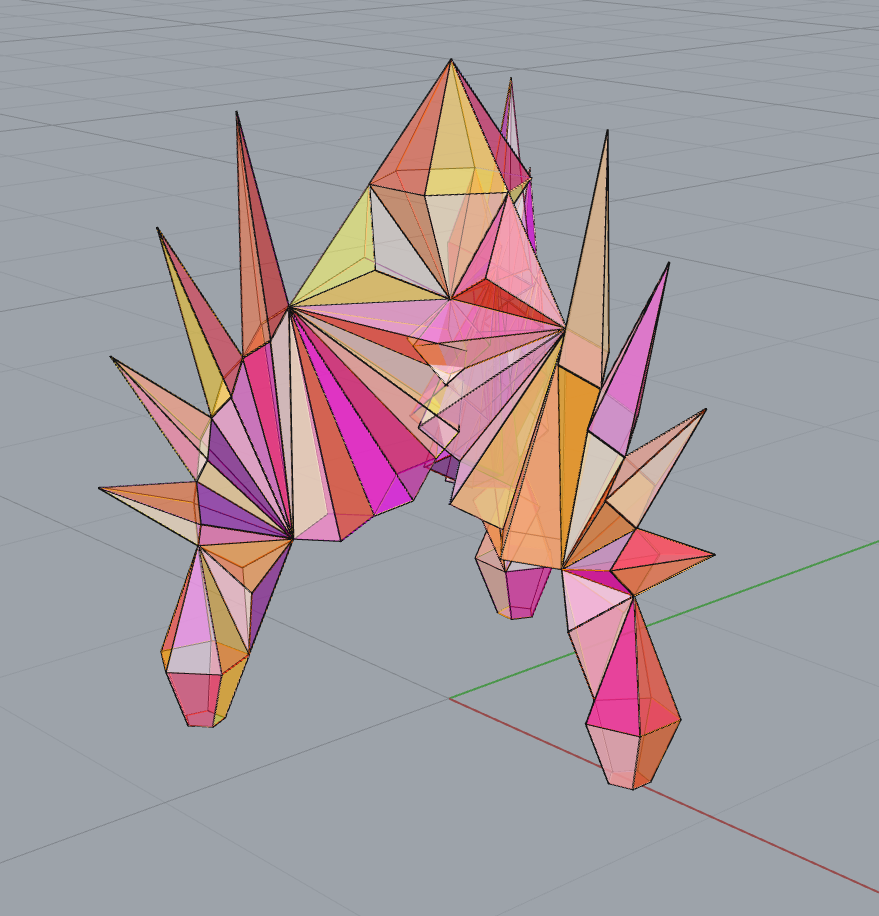The aim of this project was to design a parametric structure directly inspired by the artistic production of Davis McCarty. According to the analysis of these shapes, the grasshopper code as been designed in 4 different parts : cornerstone, feet, zone 1 and zone 2.
1.1 Cornerstone – Main prism
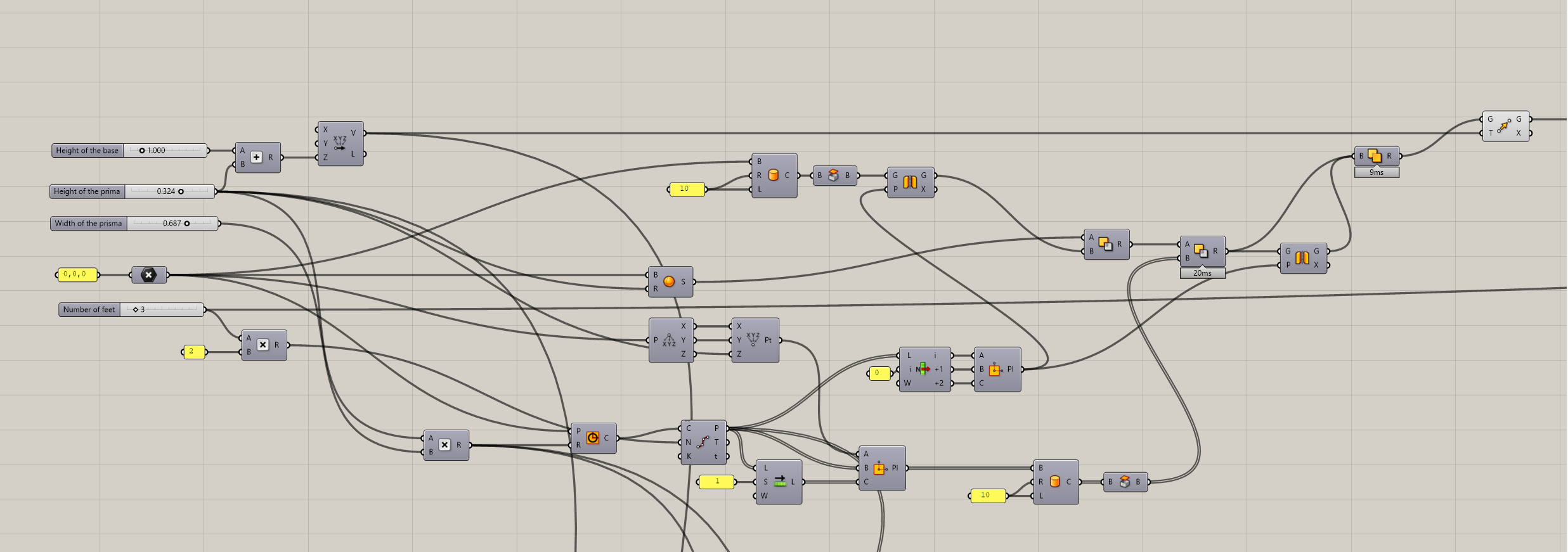
- Entry the number of feet of the structure, which is the half of the cornerstone faces.
- Create as sphere, and subtract to it with huge cylinders to create a prism.
- Move up the prism to define the height of the whole structure.
1.2 Cornerstone – Tetrahedron

- According to the place of the cornerstone, we determine the height of the tetrahedron.
- According to the position of the feet, we determine the wight of the tetrahedron.
2.1 Feet – Main prism

- Determine the number of faces of the prism.
- By symmetry, we align one edge of the prism with the one of the cornerstone.
2.2 Feet- Tetrahedron
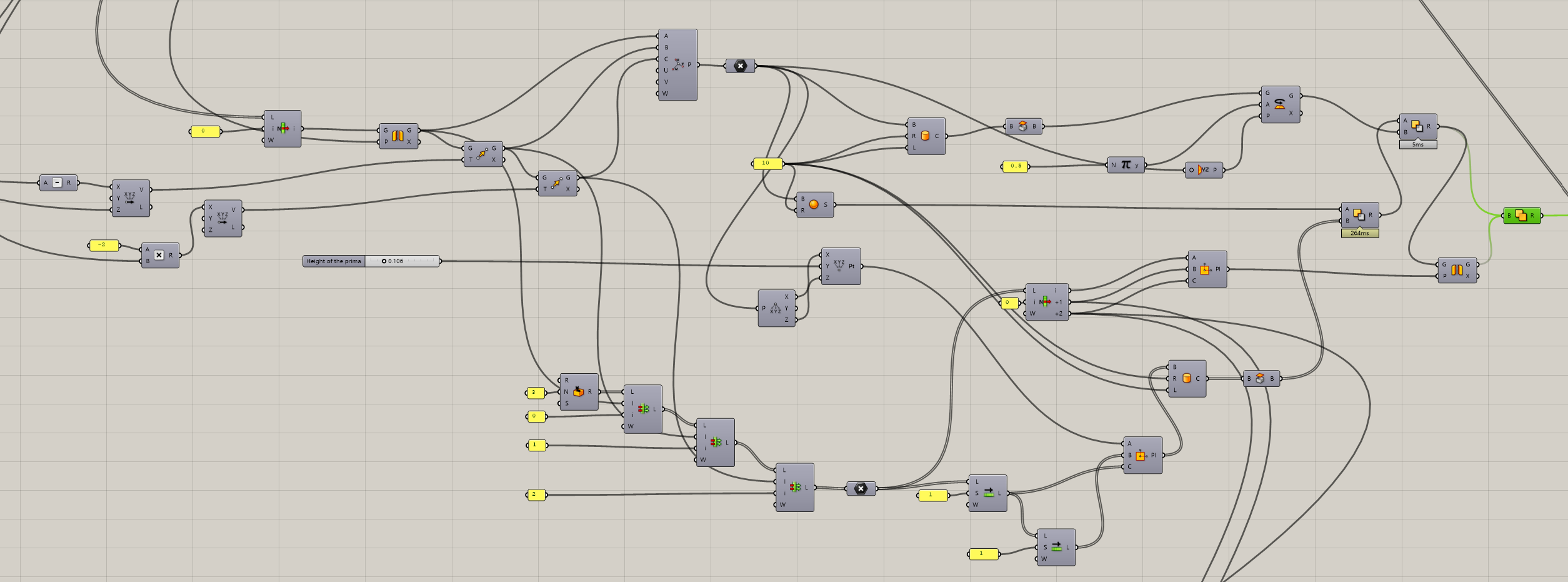
- According to the place of the cornerstone, we determine the height of the tetrahedron.
- According to the position of the feet, we determine the wight of the tetrahedron.
3. Zone 1

- According to the position of the cornerstone and the feet, create a curve.
- Divide the curve to design four different half-prisms.
4. Zone 2

- According to the position of the cornerstone and the feet, create another curve.
- Divide the curve to design four different full prisms.
5. Symmetries

- Merge all the geometries which are not the cornerstone.
- Around the cornerstone, rotate the merged geometry according to the number of feet previously decided.
6. Visual effects
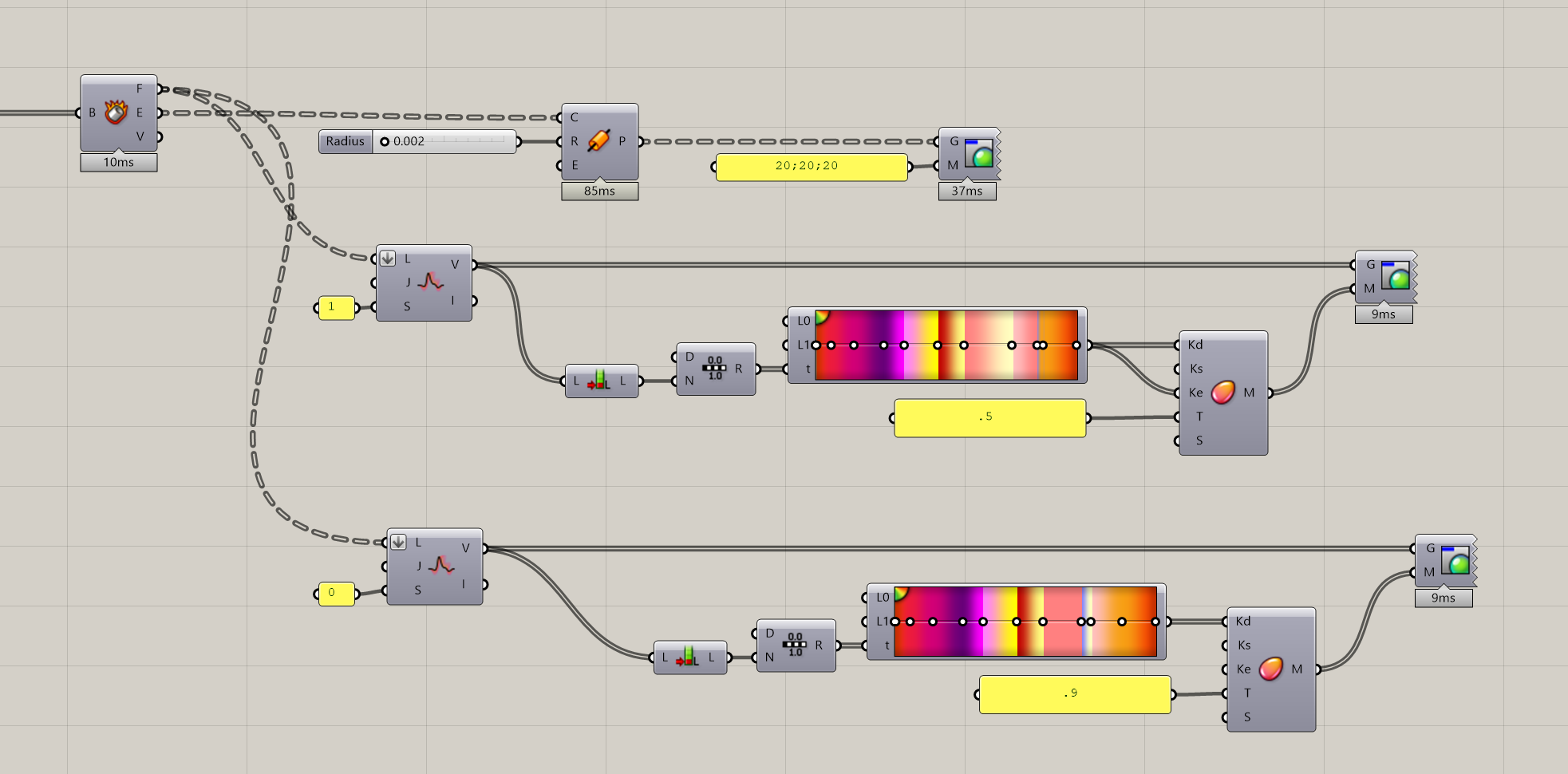
- Divide the final geometry with a DeBrep.
- Increase the thickness of the edge to shade lights on the structure.
- Create a material to play with transparency and the reflections on the glass panels.
7. Conclusion
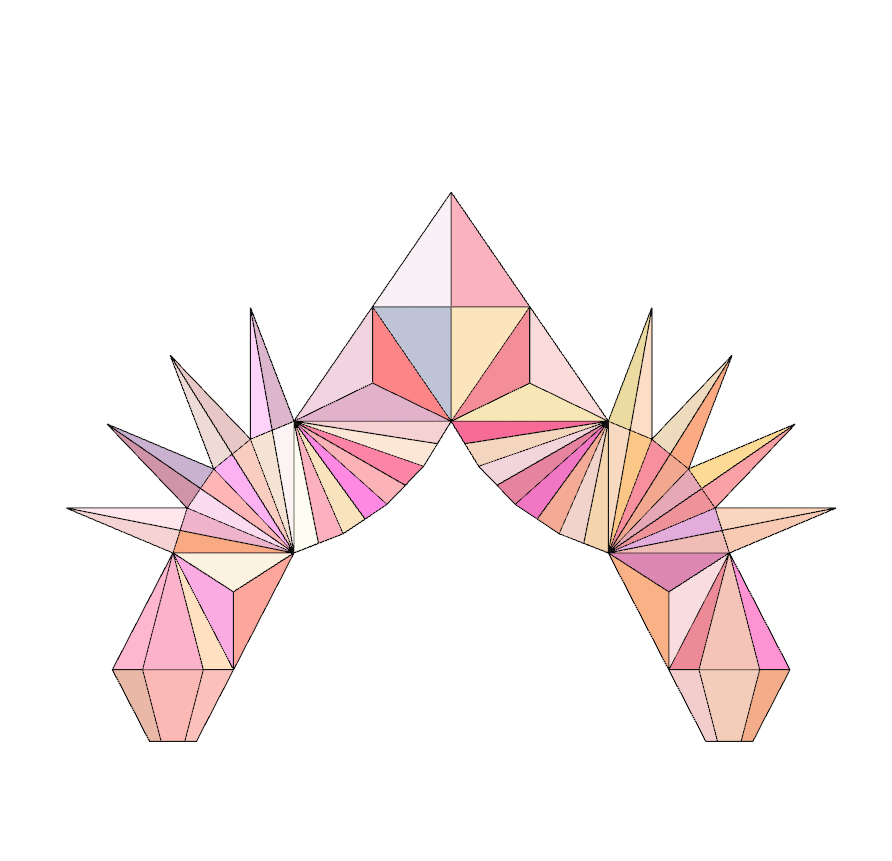
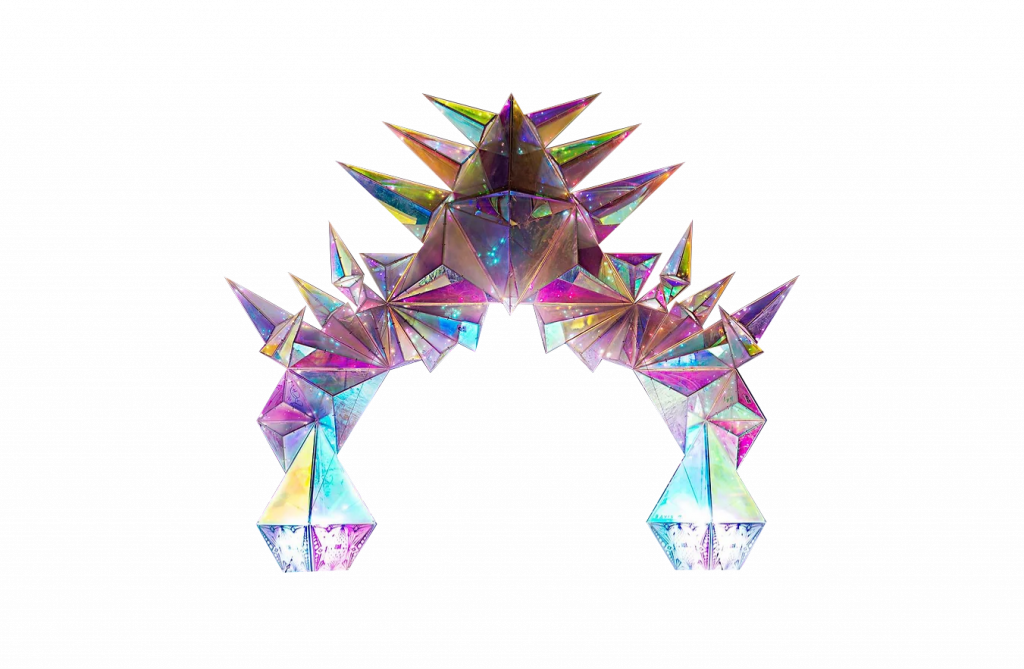
- Without using Delauney meshes, the code might be to heavy and could be optimize.
- The final shape is finally close from the reality.
It thus confirms that a parametric method of conception could allow the artist to diversify his creations.
